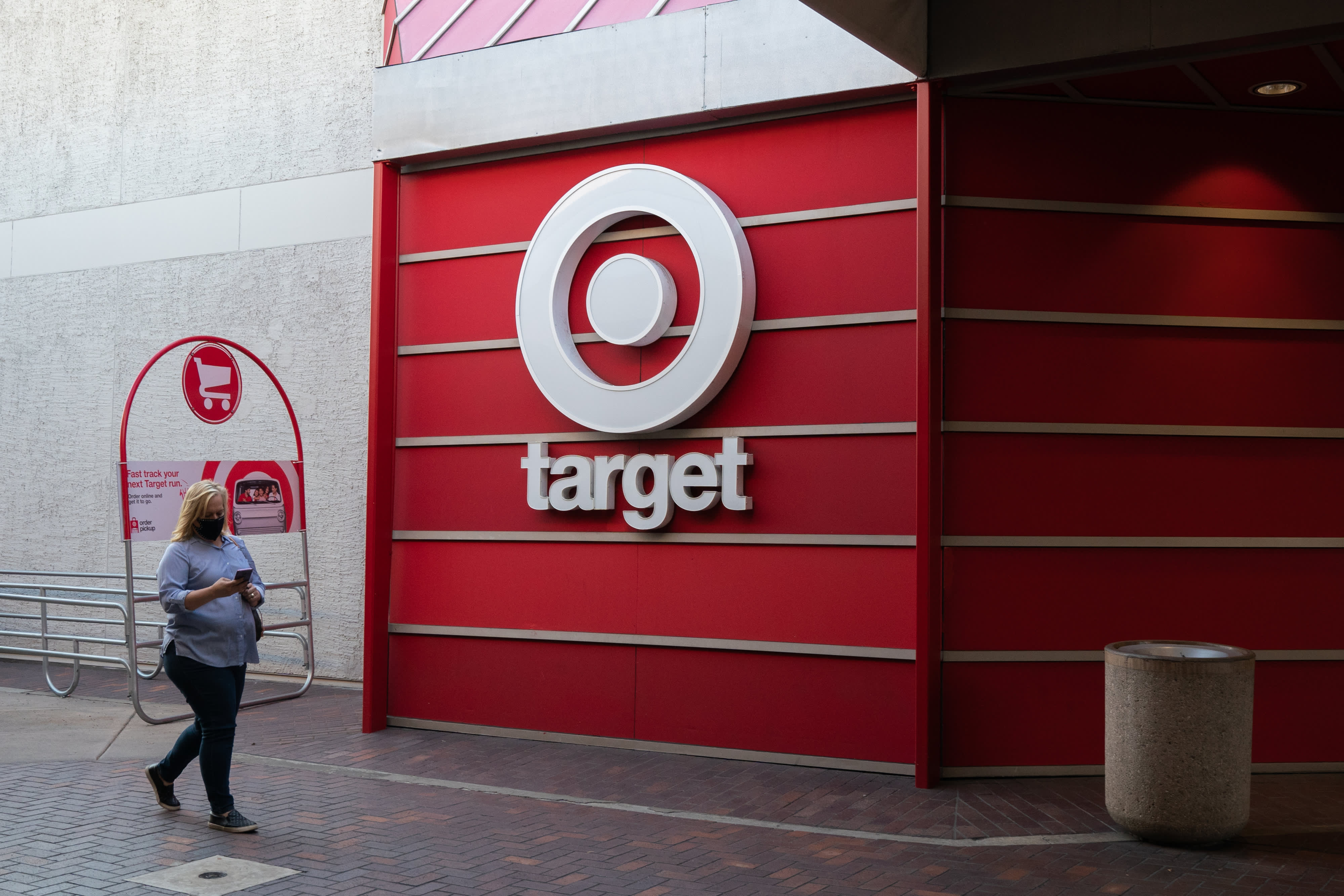Target to invest $4 billion to speed new stores and remodels, expand ability to fill online orders

A person wearing a protective mask walks past a Target Corp. store at the Grossmont Center Mall in La Mesa, California, U.S., on Thursday, Feb. 11, 2021.
Bing Guan | Bloomberg | Getty Images
Target said Tuesday that it hopes to build on its recent growth by investing about $4 billion annually over the next several years to speed along new stores, remodel existing ones and increase its ability to quickly fulfill online orders.
The retailer beat Wall Street’s expectations for fourth-quarter earnings, but declined to provide a forecast. Shares were down more than 3% early Tuesday.
At a virtual investor day on Tuesday, Target CEO Brian Cornell made the case that the retailer’s recent results aren’t a pandemic-related blip, but the payoff of its long-term business strategy. He pointed to investments and decisions it has made over the past five years such as its collection of private labels, its partnerships with popular national brands and using its stores as hubs to fulfill online orders.
“Far from being a fluke, this performance is further proof that we built a business model that is working as intended, one that puts Target in a category of its own,” Cornell said.
Target’s next steps will include opening 30 to 40 new stores each year. Some of these stores will be near college campuses and in major cities like New York, Los Angeles and Portland.
It will add two distribution centers and try out faster, tech-enabled ways to restock shelves. And it will test new hubs that sort packages, freeing up time for employees to pick and pack online orders and help the company design more cost-efficient delivery routes.
With the moves, Chief Financial Officer Michael Fiddelke said the retailer will “play offense and lean into the opportunity to build on last year’s momentum.”
Target has stood out from retail rivals during the pandemic. As shoppers consolidated trips, they spent more money at fewer places where they found a wide range of items. As shoppers prioritized safety, they gravitated toward contactless approaches like picking up online purchases in the parking lot. As consumers spent more time at home, they directed more of their dollars toward items that helped them work, learn and relax. Those factors have benefited the big-box retailer.
The company’s 2020 sales grew by more than $15 billion — greater than its total sales growth over the prior 11 years. It has gained about $9 billion in market share across its categories during the fiscal year.




